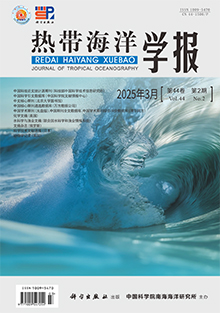The analysis results of constant elements and trace elements in the surface sediments indicate that ome terrigenous materials rich in Si, Al, K, Mg, Fe, Ti are the main components of the sediments in the Pearl River Estuary. The average levels of the main elements of oxides are SiO2 61.16%, Al2O3 14.74%, Fe2O3 5.72%, TiO2 0.88%, MgO 1.84%, K2O 2.63%, CaO 2.70%, and CaCO3 4.79%. Element content and particle size are closely related, with the main elements of Al2O3, MgO, Fe2O3, TiO2, as well as trace elements Cu, Pb, Zn, Cr, V, Co, Ni, Ba, in the northwestern coastal area and central Lingdingyang fine-grained sediment areas, of SiO2, CaO, Zr, Sr in the southwestern and southeastern district coarse sediment enrichment. The main factors that control the geochemical characteristics of sediments in this area are the source material, sedimentary environment, hydrodynamic conditions, sediment particle size, mineral composition and geochemical nature of the elements themselves.




